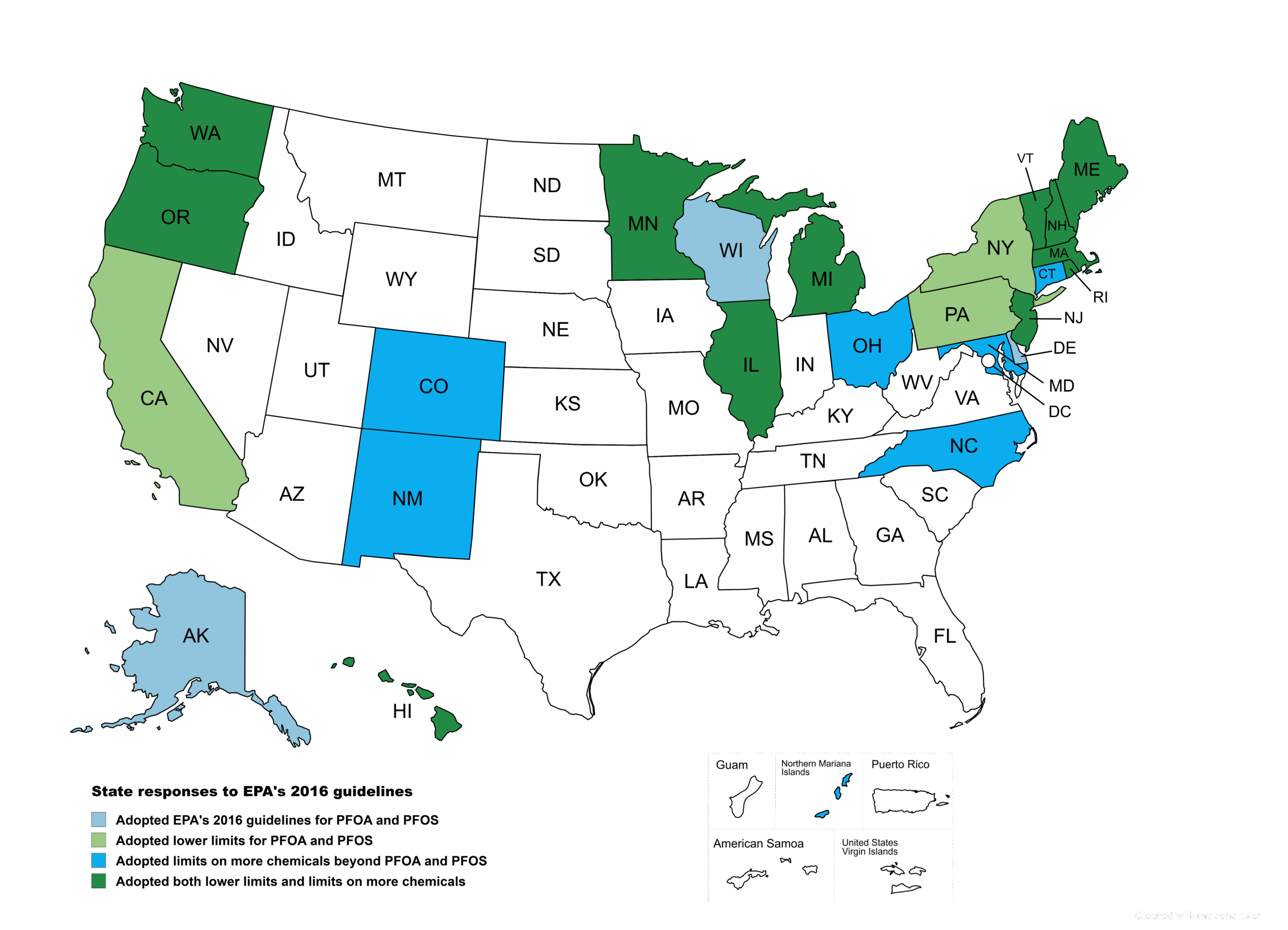PFAS: A Word About Drinking Water Guidelines

Are PFAS regulated in drinking water?
Yes. On April 10, 2024, the U.S. Environmental Protection Agency (EPA) announced the first-ever federal drinking water standards for PFAS (per- and polyfluoroalkyl substances). The announcement also marked the first time in more than 20 years EPA has set an enforceable legal limit on a new unregulated drinking water contaminant. This means public water systems must now monitor for PFAS. They must also notify the public if levels exceed the federal standards, and take corrective actions such as treating the water.
The federal standards, also known as maximum contaminant levels or MCLs, apply to six PFAS chemicals: PFOA and PFOS—two of the most common PFAS—as well as PFNA, “GenX chemicals,” PFHxS, and PFBS. Levels of PFOA and PFOS cannot exceed 4 parts per trillion (ppt) individually. Levels of PFNA, GenX chemicals, and PFHxS cannot exceed 10 ppt individually. PFNA, Gen X chemicals, and PFHxS are also regulated along with a fourth chemical, PFBS, based on a hazard index—a measure of the risk from exposure to multiple PFAS.
States paved the way for federal action
Before EPA established drinking water standards for PFAS, the agency had set non-enforceable health-based guideline levels. In 2016, the guidelines levels were 70 ppt for PFOA and PFOS, individually or combined.
However, many scientists and regulators believed these guideline levels were not protective enough of human health. As a result, a number of states took the lead in establishing their own MCLs or guideline levels for PFAS that were stricter than the federal guidelines. This led to a patchwork of rules across the country for how to address PFAS contaminants in drinking water and limit the public’s exposure.
In 2022, in response to state actions and the emerging science on the harmful health effects of PFAS, EPA revised its guidelines levels for PFOA and PFOS down to near-zero lower levels, and added guideline levels for GenX chemicals and PFBS as well. This served as a basis for the eventual creation of federal drinking water standards.
Now all states are required to meet the federal standards, at a minimum. However, states that have stricter limits for PFAS in drinking water can continue to enforce their own rules.

Why do standards and guidelines vary?
Standards and guidelines are created when state and federal regulators, after reviewing the science, calculate a level of exposure below which health effects are not expected to occur. Regulators consider different types of evidence and factors when developing guideline levels:
- Studies linking exposure to PFAS with various health effects (for instance, effects on the immune system, liver, or mammary gland development).
- Molecular studies that show the harmful effects of PFAS once the chemicals enter the body.
- The impact on vulnerable populations such as infants or pregnant women.
- How much water people drink in a day.
- How much exposure likely comes from other sources, such as diet and consumer products.
- The cost of water treatment and the availability of technology to meet the new standards and monitor for compliance.
As scientists learn more about the effects of PFAS on human health, including exposures to lesser-known PFAS and mixtures of PFAS, state and federal regulators may continue to update their standards and guidelines.
Learn more: www.pfas-exchange.org/connecting-communities
